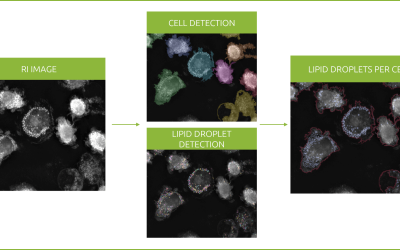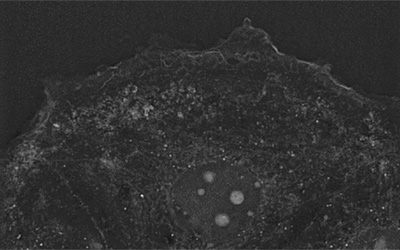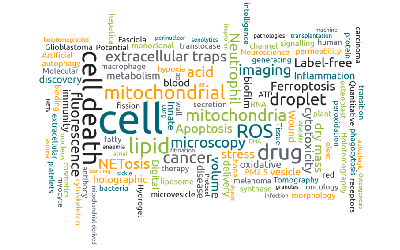Prof. Christophe Dubois is a self-confessed imaging fanatic, who heads a lab focused on thrombosis at Aix-Marseille University. He is also the proud owner of a CX-A and is one of the first users of EVE Analytics. We caught up with Prof. Dubois to ask him some questions about his research and to find out how he is integrating the Nanolive platform into his studies. Watch the full interview at the end of our blogpost.
“We have three main topics of research in my lab, firstly, we want to elucidate the mechanisms that induce the activation of the coagulation cascade. Secondly, we study the link between thrombosis and cancer, and thirdly we are working on identifying different soluble biomarkers present in the blood of cancer patients”. The three topics have one thing in common: all involve multiple actors, and complex interactions. This is where Prof. Dubois thinks the Nanolive imaging can play an important role.
“We were quickly drawn to the CX-A as it allows us to visualize cells in real time and with incredible resolution. The fact we can also use this technology with fluorescent markers, was an added attraction, because we can observe cells grow and multiply over time, and then check where proteins of interest are localized in the cells to study the impact of different drugs.”
Prof. Dubois wants to study how endothelial cells, neutrophils, neutrophil extracellular traps (NETS), platelets and fibrin interact. With each other, and with the thrombus itself. One of the main challenges of this work, is the handling and manipulation of sensitive cells. This is where Prof. Dubois sees another advantage of Nanolive imaging.
“No other machine allows us to go straight to the imaging. Almost no time is lost in the set-up, and we can compare different conditions in parallel, plus or minus drugs at different concentrations”.
When we asked which research fields could benefit from Nanolive technology, Prof. Dubois replied without hesitation “honestly, I think almost any research domain studying, or using cells can benefit from Nanolive imaging, but specifically, the pharmaceutical domain”. When asked why, he explains it is important to connect the population response of cells (division rate etc.) with what happens at the sub-cellular level after drug-addition.
Finally, we ask Prof. Dubois what he thinks about our new quantitative software, EVE Analytics.
“We are really super excited to see what it has to offer but for sure, being able to use a software that has been specifically designed to work with the RI data from the CX-A will really smoothen the analysis algorithm and helps us to do more with the data we obtain”.
We sure hope so. Nanolive would like to thank Prof. Dubois and his team for taking the time to talk to us, and for sharing this beautiful image of endothelial cells with us. All the best for your research!
Read our latest news
Revolutionizing lipid droplet analysis: insights from Nanolive’s Smart Lipid Droplet Assay Application Note
Introducing the Smart Lipid Droplet Assay: A breakthrough in label-free lipid droplet analysis Discover the power of Nanolive's Smart Lipid Droplet Assay (SLDA), the first smart digital assay to provide a push-button solution for analyzing lipid droplet dynamics,...
Food additives and gut health: new research from the University of Sydney
The team of Professor Wojciech Chrzanowski in the Sydney Pharmacy School at the University of Sydney have published their findings on the toxic effect of titanium nanoparticles found in food. The paper “Impact of nano-titanium dioxide extracted from food products on...
2023 scientific publications roundup
2023 has been a record year for clients using the Nanolive system in their scientific publications. The number of peer-reviewed publications has continued to increase, and there has been a real growth in groups publishing pre-prints to give a preview of their work....
Nanolive microscopes

CX-A
Automated live cell imaging: a unique walk-away solution for long-term live cell imaging of single cells and cell populations
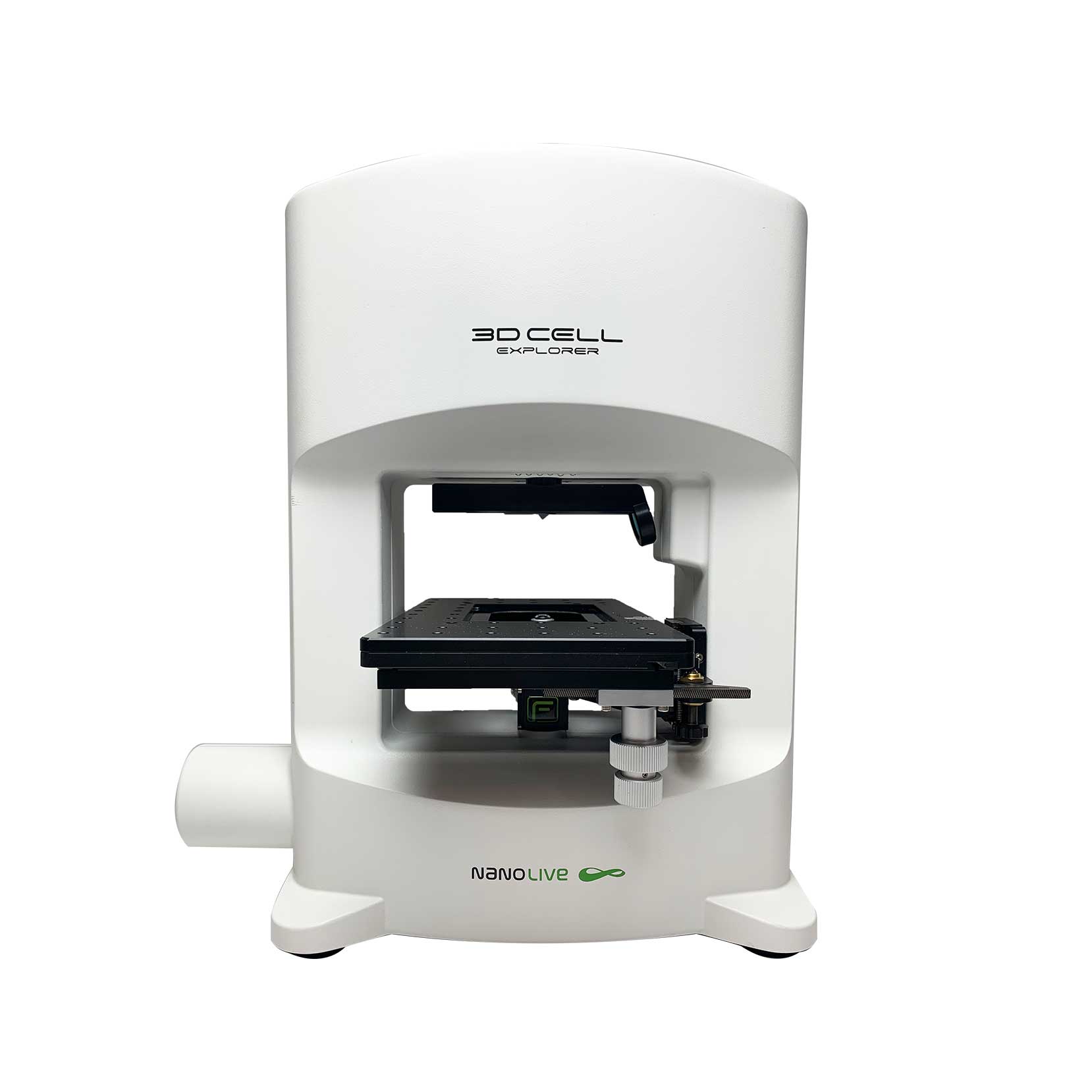
3D CELL EXPLORER-fluo
Multimodal Complete Solution: combine high quality non-invasive 4D live cell imaging with fluorescence
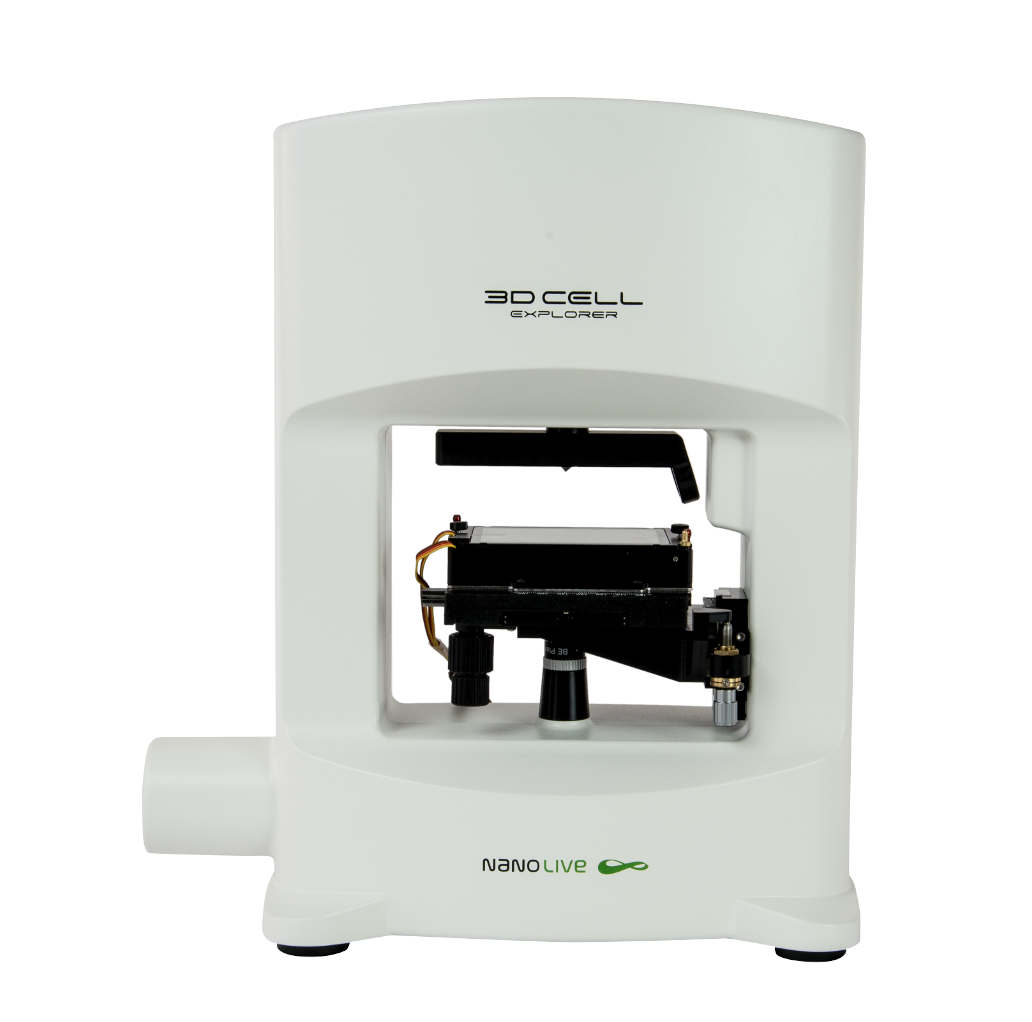
3D CELL EXPLORER
Budget-friendly, easy-to-use, compact solution for high quality non-invasive 4D live cell imaging

